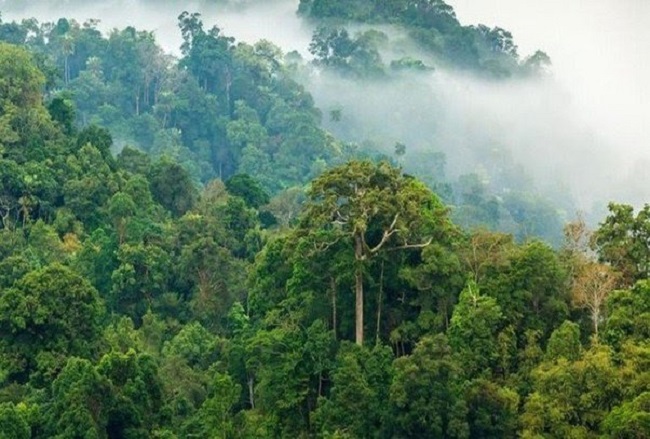 English
English

The potential of rainforests to store carbon may diminish as a result of climate change. Read more on Dynamite News:

Gothenburg [Sweden]: The potential of rainforests to store carbon may diminish as a result of climate change. This is because photosynthesis rates in rainforest species' leaves decrease at higher temperatures, and the trees' natural cooling systems fail during droughts. Increased heat endangers animals that store the most carbon. A new thesis from the University of Gothenburg demonstrates this.
Some tree species may withstand rising temperatures in the tropics by sucking up enormous amounts of water from their leaves and transpiring through wide-open pores in their leaves.
These are primarily fast-growing trees that establish themselves early in the development of a rainforest. The same cannot be said for the trees that form the canopy of old-growth rainforests. They grow more slowly but become more extensive and taller, and their leaves do not have the same ability to cool themselves through transpiration. Water powers the 'air conditioning of the leaves.
"The tropics have not experienced Ice Ages and have thus had a relatively stable climate historically as well as seasonally. With climate change, it has started to get warmer and then we have seen that some species of trees are showing increased mortality rates, but we have not really known why before," says Maria Wittemann, who wrote the thesis. She has investigated various tree species that can be loosely split between early successional species, which establish themselves early in a new rainforest, and late successional species, which grow slowly but significantly larger, providing a larger carbon sink over time.
The way the trees in the two groups tolerate heat is noticeably different. Early successional species open the pores in their leaves wider, allowing huge volumes of water to evaporate, lowering the temperature in their leaves, much like an air conditioning system. Late successional species' pores do not open as much, making it more difficult for them to stay cold.
Read also: Rate of deforestation in Amazon rainforest at highest level in 11 years
"In our measurements, we discovered significant temperature fluctuations in the leaves. The temperature difference between late-successional and early-successional species growing in the same place could reach 10 degrees Celsius. Late successional species struggled more with abnormally high temperatures. These trees died at a higher rate "Maria Wittemann says
However, the early successional species' profuse transpiration through their leaves necessitates a significant amount of water. During a drought, the researchers saw that early successional species became more susceptible to heat and shed their leaves. Late successional species were more drought resistant due to their lower water use.
"Our findings reveal that photosynthetic rates in rainforest trees decrease as leaf temperature rises, which occurs primarily in late-successional species. The proteins and membranes in their leaves, which are required for photosynthesis, fail, and the trees eventually die from carbon famine because they are unable to convert enough carbon dioxide from the air. This has an impact on the entire ecosystem. For example, we know that some animals consume the fruits of late-successional plants "Maria Wittemann adds.
Co-operation with a local university
According to a previous study, the situation is the worst in the Amazon. This carbon sink is expected to be converted into a carbon source as early as 2035. Climate change has not been as severe in African rainforests.
In conjunction with the University of Rwanda, researchers at the University of Gothenburg are doing research in high-elevation forests in Rwanda. The trees were researched in situ, but seeds were planted in Gothenburg climate chambers to study their development at different temperatures.
"In Rwanda, we are collaborating with a variety of stakeholders. Rwanda has little rainforest remaining, and when they plant new trees, they want to know which indigenous species would thrive in a warming climate "Maria Wittemann states. (ANI)
No related posts found.